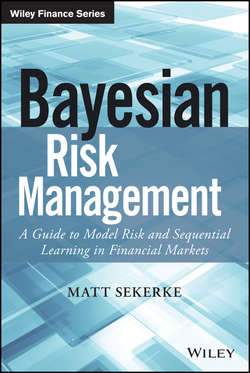Читать книгу Bayesian Risk Management - Sekerke Matt - Страница 6
Acknowledgments
Chapter 1
Models for Discontinuous Markets
ОглавлениеThe broadening and deepening of markets for risk transfer has marked the development of financial services perhaps more than any other trend. The past 30 years have witnessed the development of secondary markets for a wide variety of financial assets and the explosion of derivative instruments made possible by financial engineering. The expansion of risk transfer markets has liquefied and transformed the business of traditional financial firms such as banks, asset managers, and insurance companies. At the same time, markets for risk transfer have enabled nontraditional players to enter financial services businesses, invigorating competition, driving down prices, and confounding the efforts of regulators. Such specialist risk transfer firms occupy a number of niches in which they can outperform their more diversified counterparts in the regulated financial system by virtue of their specialized knowledge, transactional advantages, and superior risk management.
For all firms operating in risk transfer markets, traditional and nontraditional alike, the ability to create, calibrate, deploy, and refine risk models is a core competency. No firm, however specialized, can afford to do without models that extract information from market prices, measure the sensitivity of asset values to any number of risk factors, or forecast the range of adverse outcomes that might impact the firm's financial position.
The risk that a firm's models may fail to capture shifts in market pricing, risk sensitivities, or the mix of the firm's risk exposures is thus a central operational risk for any financial services business. Yet many, if not most, financial services firms lack insight into the probabilistic structure of risk models and the corresponding risk of model failures. My thesis is that most firms lack insight into model risk because of the way they practice statistical modeling. Because generally accepted statistical practice provides thin means for assessing model risk, alternative methods are needed to take model risk seriously. Bayesian methods allow firms to take model risk seriously – hence a book on Bayesian risk management.
